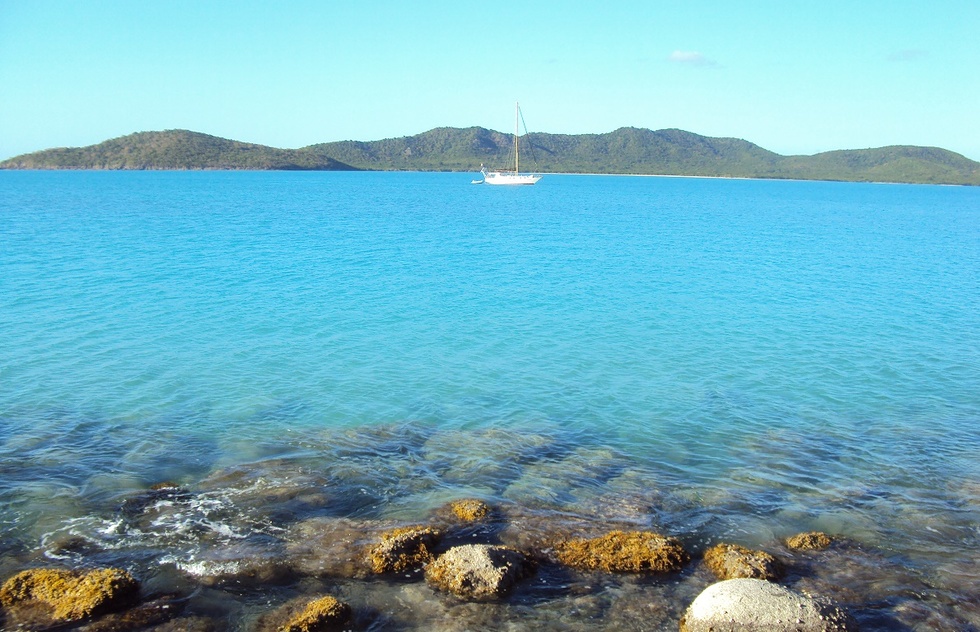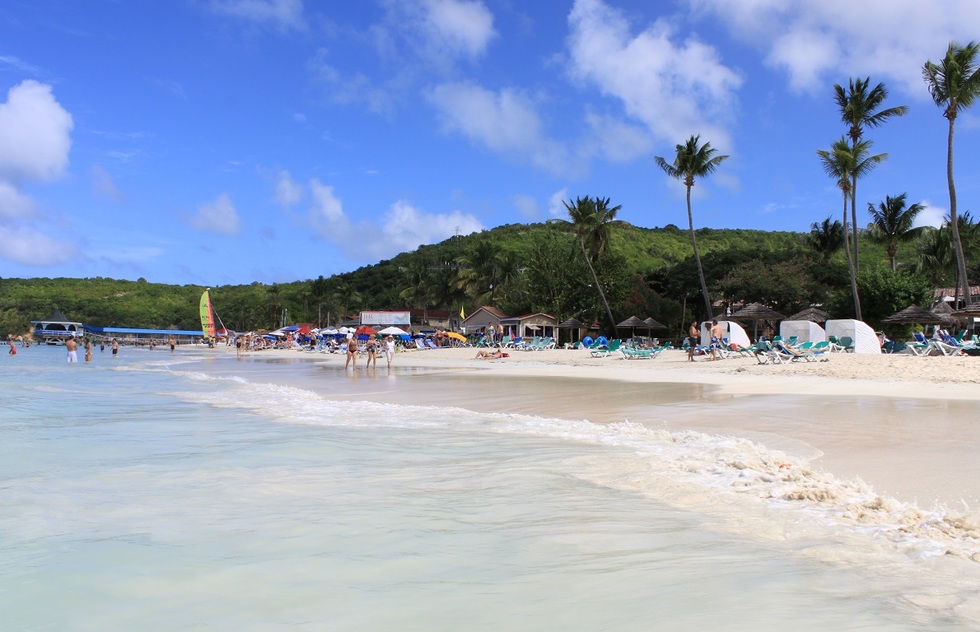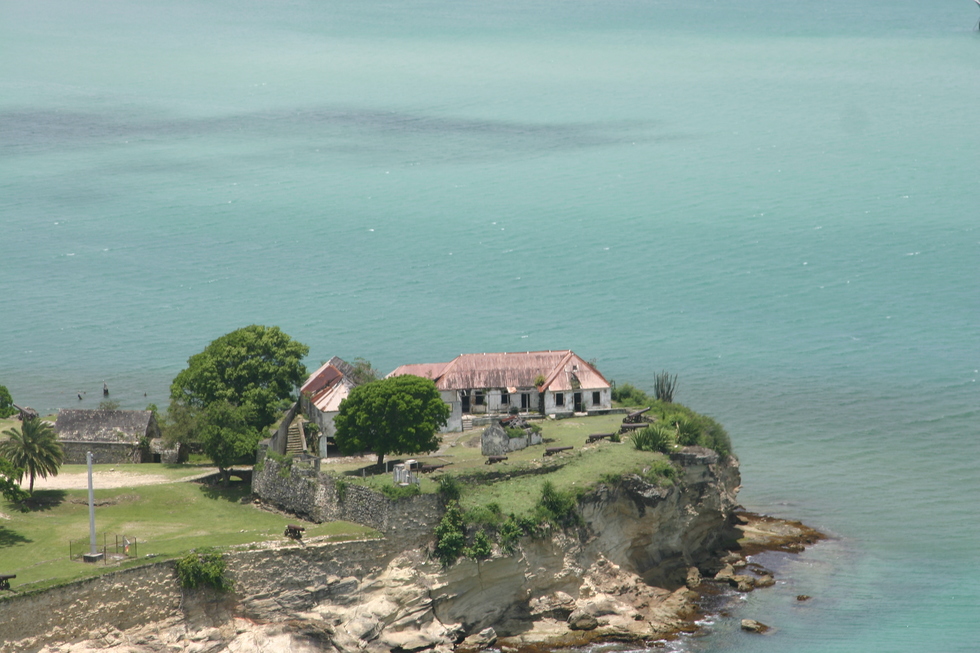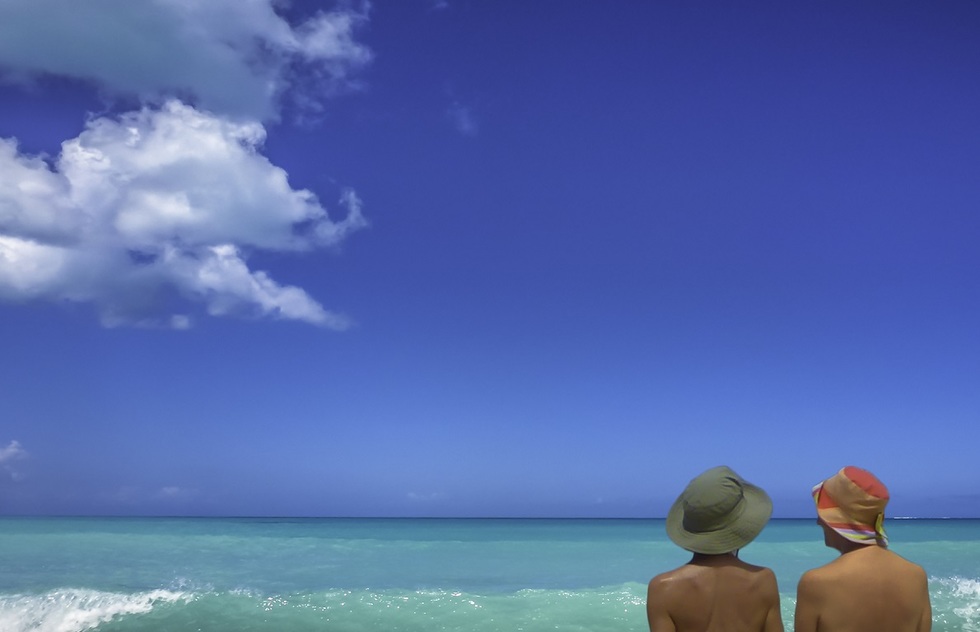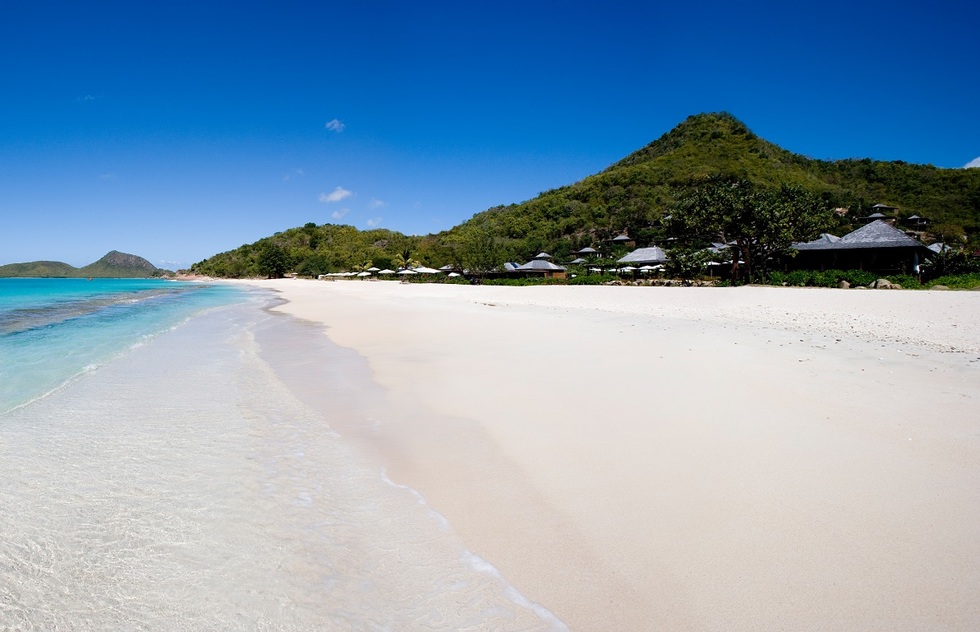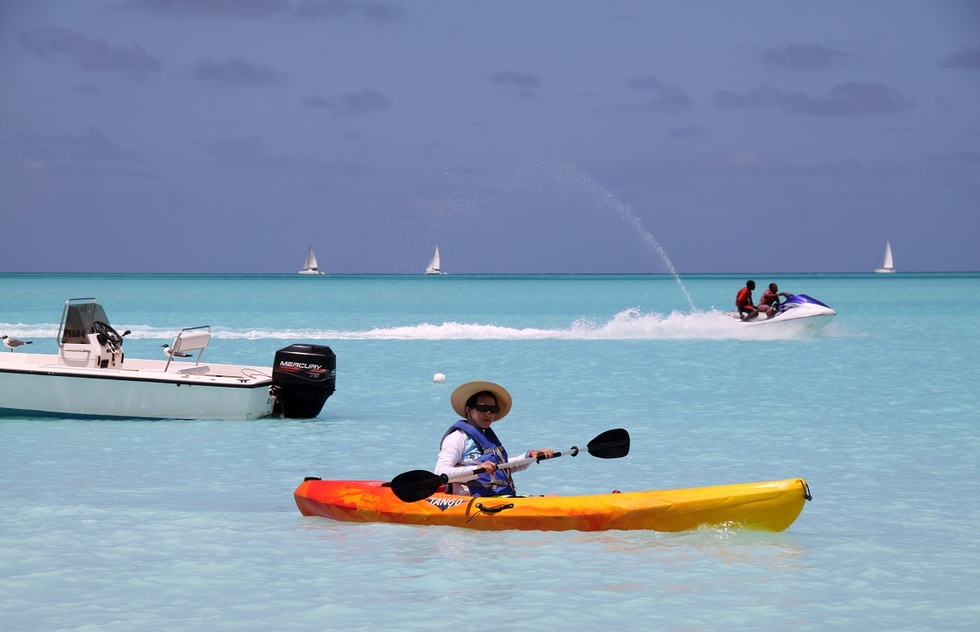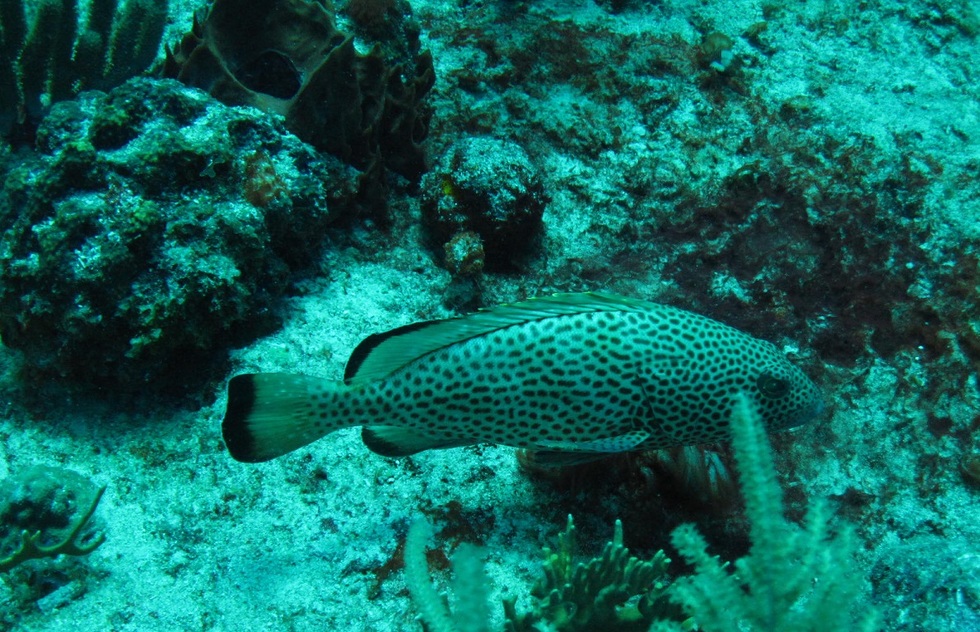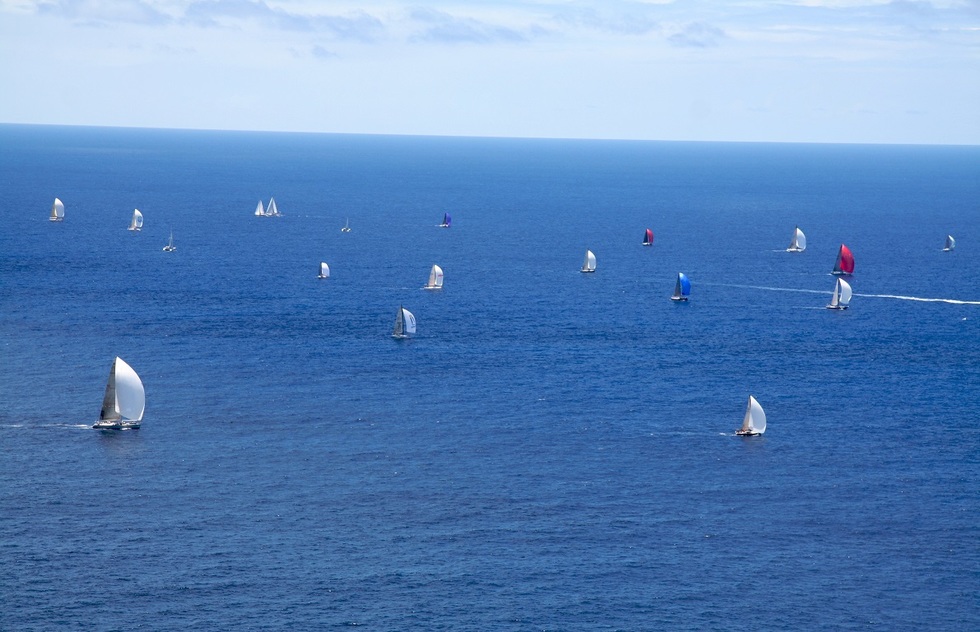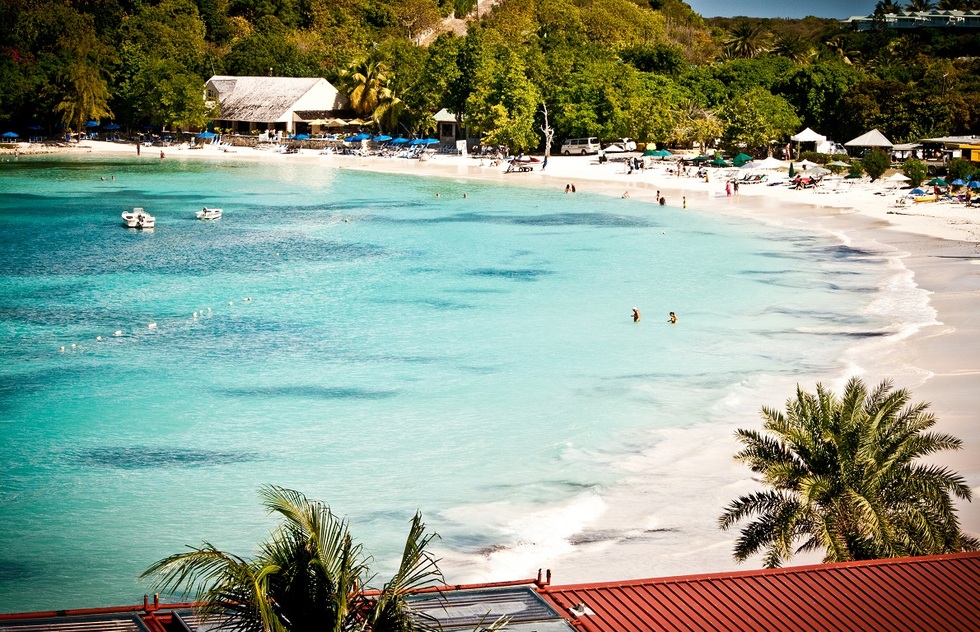Antigua's Got 365 Beaches. Here Are the Top 10
By Shakeema EdwardsAsk Antiguans how many beaches their island has and you’ll likely get this matter-of-fact answer: “365—one for every day of the year.” For Antiguans, having hundreds of turquoise beaches is a point of pride, but first-time visitors can easily be overwhelmed by this abundance of options.
Separating good beaches from great ones isn’t simply a matter of picking the prettiest. It’s a matter of personality. If you’re looking for a secluded beach where you can watch a sunset in silence, you’ll want to stay away from local favorites and heavily developed resort areas. If you’re hoping to see a barracuda or hawksbill turtle while snorkeling, then many of the choices on the island’s Atlantic side aren’t for you. Since 365 beaches give you a lot of sand to sift through, here are 10 of the best, each chosen for a solid reason.
Separating good beaches from great ones isn’t simply a matter of picking the prettiest. It’s a matter of personality. If you’re looking for a secluded beach where you can watch a sunset in silence, you’ll want to stay away from local favorites and heavily developed resort areas. If you’re hoping to see a barracuda or hawksbill turtle while snorkeling, then many of the choices on the island’s Atlantic side aren’t for you. Since 365 beaches give you a lot of sand to sift through, here are 10 of the best, each chosen for a solid reason.
Best for People Watching: Dickenson Bay
On the island’s northwestern coast lies this beacon of oceanfront development. This beach is best for social butterflies, as its fine white sand is usually filled with both locals and tourists staying at the nearby Buccaneer Beach Club, Halcyon Cove, and the award-winning Sandals Grande Antigua. You can go for a swim in the warm, shallow waters of the Caribbean Sea or dine at one of the beachfront restaurants even if you aren’t staying at one of them. Paradise Reef, a mile-long coral garden, is just a 10-minute boat ride from the sand. Strap on a snorkel and you’ll come face-to-face with kaleidoscopic parrot fish, lobsters, and other forms of Antigua’s diverse marine life.
How to get here: A 20-minute drive from V.C. Bird International Airport will take you through the Hodges Bay area, along the island’s scenic northern coast.
Best for Horseback Riding: Fort James
With no beachfront resorts or luxury hotels in the vicinity, this northwestern shoreline is more of a local haunt than a lodestone for tourists—though cruise ship passengers can sometimes be spotted here, less than 3 miles from the dock in the island’s colorful capital city, St. John’s. The relative lack of crowds makes this a fine beach to explore on horseback. Ride alongside the soft white sand and up to the ruins of the 18th-century fort that gave the beach its name to see the full complement of cannons. You can also wade into the water on the back of a bay. A handful of beachside restaurants—Millers by the Sea near the northern end and BeachLimerZ and Russell’s to the south—offer local seafood dishes, including savory conch fritters.
How to get here: Taxis are readily available at the cruise ship dock, and a drive from there down Fort James Road can get you on the beach in 12 minutes.
Best for (Clothing-Optional) Privacy: Hawksbill Bay
There are actually four grey-sand beaches on Hawksbill Bay: Royal Palm Beach, Sea Grape Beach, Honeymoon Cove, and Eden Beach. The bay is named for protruding rocks that resemble a hawksbill turtle, the island’s national marine animal. While the beaches are good for snorkeling, the real draws are serenity and spectacular views of offshore grass-covered rocks. Royal Palm is easily accessed by the Gray’s Farm Main Road, but the other three are more secluded. To get to those havens of tranquility, take a walk through Hawksbill by Rex Resorts, an all-inclusive hotel. Most of the sunbathers you’ll meet on Eden, the island’s only nudist beach, will be guests at the resort since locals tend to frequent more family-friendly spots.
How to get here: Located on the island’s west coast, all four beaches are a 20-minute drive from the capital.
Best for Playing Robinson Crusoe: Hermitage Bay
This strip of pure white sand, which spans over 1,250 feet between the crystal waters of the Caribbean Sea and a verdant hillside, is one of the island’s most secluded spots. Though it’s open to the public (as all of Antigua’s beaches are), Hermitage Bay can be a challenge to get to if you aren’t staying at the resort of the same name. Situated on the west coast, the beach is 30 minutes from the capital, and you’ll need to take an off-road vehicle to navigate the rugged terrain leading to the shore. But trust us: This breathtaking beach is worth the trek, especially for those looking for a quiet day and warm waters that are perfect for swimming.
How to get here: Whether coming from the airport or the capital, you’ll have to drive through quaint Jennings Village.
Best for Watersports: Jolly Beach
This mile-long white-sand beach near St. John’s is noteworthy for its energetic atmosphere and proximity to two first-rate destinations. With Jolly Beach Resort & Spa (the island’s largest all-inclusive resort) right on the waterfront and Jolly Harbour (a prime maritime community and yachting center) only a five-minute walk away, this beach is a delight for watersport lovers. Hobie Cat sailing, kayaking, windsurfing, and snorkeling are all available through the resort, while Jolly Dive, a PADI-licensed dive resort, offers scuba diving courses and certification. Eat on the beach at one of several nearby restaurants. At the family-friendly Castaways Beach Bar and Restaurant, you can get appetizers made in a traditional Antiguan coal pot.
How to get here: Located 7 miles south of the capital, or 9 miles southwest of the airport, the beach is easily accessed via Valley Road.
Best for Sunbathing: Ffryes Beach
If all you need is fine white sand and warm turquoise water, then this is the beach for you. Though superb for swimming and sunbathing, the waves aren’t ideal for watersports and there’s not much to see if you snorkel. But on really clear days, the southern end of the beach offers a great view of neighboring island Montserrat. Two lush headlands flank the sand. On the headland at the beach’s northern end is Dennis Cocktail Bar & Restaurant, where you’ll find local and international dishes. And on the other side of the headland is Little Ffryes, a shorter, shallower beach close to Cocobay Resort and Sheer Rocks restaurant. Take a taxi to Ffryes and you’ll get to see two beaches for the price of one.
How to get here: After a 30-minute drive south from the capital, you can immediately sink your toes into the soft white sand, because Valley Road runs right up to the beach.
Best for Snorkeling: Morris Bay
Morris Bay is peppered with coconut palms, providing a top-notch picnic area. Cades Reef, a 2-mile-long reef that’s a quarter mile offshore, houses southern stingrays, multicolored wrasses, nurse sharks, and more. Considered one of the best dive sites on the island, the reef is easy to get to through touring companies like Wadadli Cats, making this beach a snorkelers’ paradise. About a six-minute walk from the beach is Curtain Bluff, a boutique resort that offers free snorkeling gear and twice-daily snorkeling trips to its guests. On shore, the tall, shady trees make this a great place to relax.
How to get here: There are a few ways to get to this southern beach from the capital, but you’ll want to take the scenic route through the rainforest via Fig Tree Drive, a winding road lined with fruit trees—mangos, coconuts, guavas, and, of course, figs. The beach is 40 minutes from the capital in St. Mary’s parish, home of other phenomenal sights like Mount Obama—the island’s highest peak. Formerly known as Boggy Peak, the hill was renamed in honor of Barack Obama after he became the 44th President of the United States.
Best for Historical Attractions: Pigeon Point
A tour of the island’s historic district isn’t complete without a trip to the tranquil waters of this south-coast beach. Nelson’s Dockyard National Park, the world’s last working Georgian dockyard, is just a five-minute drive away and is filled with museums, fort ruins, hotels, and restaurants—such as Admiral’s Inn, Pillars Restaurant, and Copper & Lumber Store Hotel—that occupy restored historic buildings. The Dockyard, a UNESCO World Heritage Site, is located at English Harbour, a top sailing destination. Pigeon Point is a particular hot spot in April and May, when sailors from around the world visit during the famed Antigua Sailing Week. The event’s Lay Day, a free midweek celebration, is held on the beach, so visitors can watch the boats race while they barbecue. And even if you’re not a history buff or sailing enthusiast, there are plenty of shady trees to sleep under, picnic benches to gather around, and clear waters for snorkeling.
How to get here: The 40-minute drive south from the airport will take you through picturesque towns like Falmouth and Liberta.
Best for Birding: Half Moon Bay
On the island’s southeastern coast, this pink- and white-sand beach stretches for almost a mile in front of the Atlantic Ocean. A protective reef near the beach’s northern end prevents rough waves of the Atlantic from breaking on shore, making waters calm enough for swimming and snorkeling. Choppier waves in the middle and southern end of the beach are good for bodysurfing and wakeboarding. (You’ll have to pack your own gear, however, because rentals aren’t readily available.) The beauty of this crescent-shaped beach makes it popular with locals and tourists alike, but its length and location—a 40-minute drive from the capital—ensure that you’ll be able to find a secluded spot if you want one. Beachfront accommodations are scarce, but two hillside villas, Dolphin View House and Tree Tops Guest Cottages, overlook the panorama. The beach is also a treat for birders, who should be on the lookout for broad-winged hawks, ospreys, and brown pelicans. Other birds, such as the green-throated carib, can be seen near villas or on telephone wires near the beach.
How to get here: The beach is at the edge of the seaside village of Freetown, 35 minutes from the airport via Sir Sydney Walling Highway.
Best for Exploring: Long Bay
Sheltered by a nearby barrier reef, the calm crystal waters of Long Bay are ideal for swimming and snorkeling even though it’s on the island’s rougher Atlantic side. This eastern shore is for explorers. The Verandah Resort & Spa and Pineapple Beach Club, two luxury spots that offer free snorkeling gear to guests, are just a 5-minute walk away. Snorkeling is a must here—blue tangs and eagle rays are common. If you’d like to go sightseeing before making your way to the shore, take a six-hour Island Safari Discovery Tour provided by Tropical Adventures Antigua. The tour takes you to national landmarks like the natural limestone arch known as Devil’s Bridge before winding down with a trip here.
How to get here: It’s 30 minutes east of the airport, and the drive passes through Pares Village, where you’ll find Betty’s Hope—a sugar plantation marked by two sugar mill towers (you'll see them on the Island Safari tour)—before taking you to the beach in Willikies.





